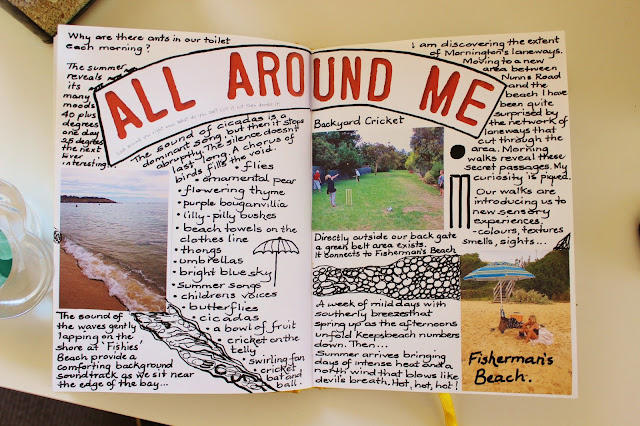A Great Writing Habit: Rereading Your Writer's Notebook
I am forever rereading writing pieces from my notebooks. I greatly appreciate how much rereading older entries assists me in discovering a new idea to feed this writing life addiction. Virginia Woolf defines rereading as a chance to find diamonds in the dust-heap. I find myself frequently covered in dust and constantly looking for precious gems.
I am acutely aware that rereading is vitally important to me as a writer. Apart from the possibility of finding a new writing thread, I am also reliving the moment in time when I first captured a particular entry. On some occasions rereading connects me with previously over looked memories or ideas. So apart from reading to revise or proofread, I would also add rereading for the express purpose of excavating ideas. This rereading is akin to rummaging through a toy box as a child and discovering a lost treasure. It works best when I leave some time between the writing and the rereading. Often i deliberately chose an older notebook to spark my thoughts.
Ralph Fletcher in his great little book, ‘Breathing in Breathing Out’ talks about this very act of rereading:
'Some writers claim they never revisit their notebooks. But most of us go back incessantly, rummaging, rereading, looking for- what? For me, I don’t usually know what I’m looking for until I find it. And then: Aha!'
Like Ralph, I don’t always know what I am specifically looking for as I reread, but I am generally confident that I will find something useful to me as a writer.
One of the many things that need to be modelled for young writers is the way other writers go searching back for ideas. When students lament that they have no idea what to write about, you are doing them a huge favour by suggesting that they go back to their previous writing. I make a point of modelling this process, so students know how it works.
You could encourage your students to reread for a number of purposes:
• Reread consciously looking for something to write about, or something to rewrite.
• Reread randomly hoping to land on a line or image that inspires you to write. This rereading is skimming in search of a chance landing.
• Reread to find your voice. Rereading notebook entries written in different voices can assist the writer to find the voice, the tone appropriate for a new writing piece.
• Reread to find material related to a particular theme or idea.
The writer’s notebook is not the place where you bring your unpolished gem of an idea to polished completion, but it definitely provides a place to begin shaping and reshaping selected pieces. Rereading supports this process.
What does this mean for you and your students? Well, for a start they will need plenty of notebook entries. It's hard to rummage through thin pickings...
By this time of the year student notebooks should be beginning to bulge with beginnings, experimental pieces and partially developed writing ideas. If their notebooks have been sparsely used, and intermittently visited, then rereading for new ideas isn't going to be all that fruitful, I'm afraid. In these situations, neither the teacher, and as a natural consequence the students, have developed a perception of the notebook as a gathering point for writing- a collection zone for their many ideas and written thoughts. Notebooks need regular nourishment.
The notion of rereading for ideas relies on the writer being able to choose from a veritable feast of previously recorded compositions. This rests on a foundation of regular writing opportunities. It's hard to make discoveries when the treasure trove is close to empty...
Try This!
Find an old writer’s notebook. Open it to any page and reread the entry. Let that be the inspiration or launching pad for a new piece of writing. Even if it’s not what you thought you’d ever write more about, give it your best shot, and see what happens.It might surprise what turns up when you take a second look. Ah, the value of rereading your entries!











Comments
Post a Comment